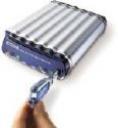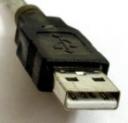 McAfee, one of the industry’s leading software developers of anti-virus software have through its Avert Labs has discovered a new Trojan that infects WindowsCE which was developed for the Microsoft PocketPCs. The Trojan, disables data and network security rendering it useless and can be installed via memory card. The Trojan has the nasty ability to defy removal through software methods with the exception of a total re-format and re-installation of the applications and OS from a secure and safe source. Infected users are also asked not to use flash drives or memory sticks with saved data for they can also contain the code which spreads the trojan.The Trojan was discovered in China and makes itself the home page of the heavily reliant PocketPCs on the web. Information regarding the device, serial number and other personal information are then sent to the author of the Trojan leaving it open to future attacks and installation of malware due to security that has been turned off by the said Trojan.
McAfee, one of the industry’s leading software developers of anti-virus software have through its Avert Labs has discovered a new Trojan that infects WindowsCE which was developed for the Microsoft PocketPCs. The Trojan, disables data and network security rendering it useless and can be installed via memory card. The Trojan has the nasty ability to defy removal through software methods with the exception of a total re-format and re-installation of the applications and OS from a secure and safe source. Infected users are also asked not to use flash drives or memory sticks with saved data for they can also contain the code which spreads the trojan.The Trojan was discovered in China and makes itself the home page of the heavily reliant PocketPCs on the web. Information regarding the device, serial number and other personal information are then sent to the author of the Trojan leaving it open to future attacks and installation of malware due to security that has been turned off by the said Trojan.
The Trojan has been found contained snugly within legitimate installers and Asia being one of the fastest growing areas for mobile devices it would only take a little time before the said Trojan aptly named InfoJack spreads and wreaks havoc on Asia’s growing mobile PC community. The US-CERT or Computer Emergency Readiness Team has already taken notice of the said Trojan and is closely monitoring for further developments. Them along with anti-virus developers are currently developing methods of defeating the perpetrator and hopefully also capture the crook who designed the said malware.





